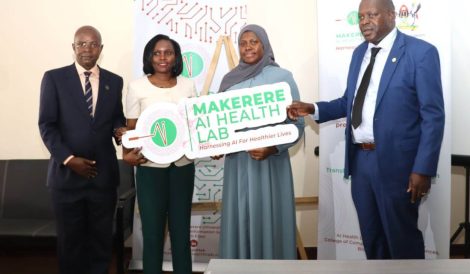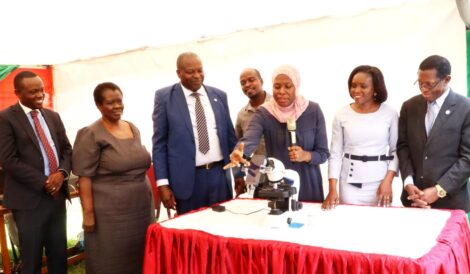AI-Powered Ocular App Shows Promise in Malaria Diagnosis
A recent field evaluation of Makerere University’s AI-driven Ocular App has shown significant potential to transform malaria diagnostics across Uganda, especially in high-volume facilities. The assessment, conducted at four health centers Komamboga HC III, Kiruddu Hospital, Mulago National Referral Hospital, and Kasangati Health Centre compared the app’s diagnostic capabilities with expert human analysis in detecting malaria parasites under real-world conditions.
The results revealed the app’s strong performance in cases with moderate to high parasitemia, delivering parasite and white blood cell (WBC) counts far faster than human experts. On average, the model completed analysis in approximately 8 minutes and 20 seconds per full slide compared to the 25–30 minutes typically required by trained microscopists who must manually examine 100 fields under a microscope. The app processed each field of view in about 5 seconds.
Mulago and Kiruddu hospitals, both high-throughput urban facilities recorded the longest average times for expert slide reviews, largely due to the complexity of cases and higher parasite densities observed. In these settings, the app demonstrated high efficiency, handling complex slides with minimal human intervention. However, experts noted that while the tool kept pace with parasite detection in dense infections, it struggled to consistently identify low-level infections or early-stage parasites, leading to some false negatives. This limitation was most pronounced at Komamboga HC III, where poor slide staining quality further reduced detection sensitivity.
At Kiruddu, several discrepancies between expert grading and the AI’s output were noted, especially in borderline cases where human analysts marked infections as “1+” or “2+” but the app returned zero counts. Experts attributed some of these inconsistencies to the model’s reliance on numerical thresholds, which may not capture low-grade infections as effectively as subjective human grading.
The evaluation team recommended several improvements to enhance the model’s performance, including increasing sensitivity to early-stage infections, retraining the AI with missed (false negative) cases, expanding the detection of multiple malaria species, and upgrading autofocus functionality to ensure even parasite visibility across poorly stained slides.
Healthcare workers who participated in the pilot offered enthusiastic feedback, praising the app’s efficiency and user-friendliness.
“It’s my first time to use it, but it has been wow,” one lab technician said. “What you would take minutes figuring out under the microscope, the app does in a second—just a click, and everything is done.”
Another added, “AI helps us detect malaria parasites and count white blood cells easily. I’m ready to start using it as soon as possible.”
The tool was also welcomed for reducing eye strain and workload. “Looking through a microscope for long periods causes eye problems. This app could phase that out—it’s a very easy approach and will help reduce our workload.”
The Malaria diagnostic App is part of the Ocular Project under the Makerere AI Health Lab, aimed at leveraging artificial intelligence to bridge diagnostic gaps in underserved settings. As malaria continues to be a major public health threat in Uganda accounting for over 97% of parasitic infections—the app could play a vital role in improving diagnosis accuracy, reducing workload on health staff, and strengthening surveillance across the country.
This evaluation underscores both the promise and challenges of AI in public health and the need of working closely with clinicians and health facilities to refine the tool and ensure it fits seamlessly into Uganda’s health systems.
With further refinement and expanded deployment, the Ocular App could revolutionize malaria diagnostics in Uganda and offer a model for other malaria-endemic countries exploring tech-driven solutions in healthcare.
End



